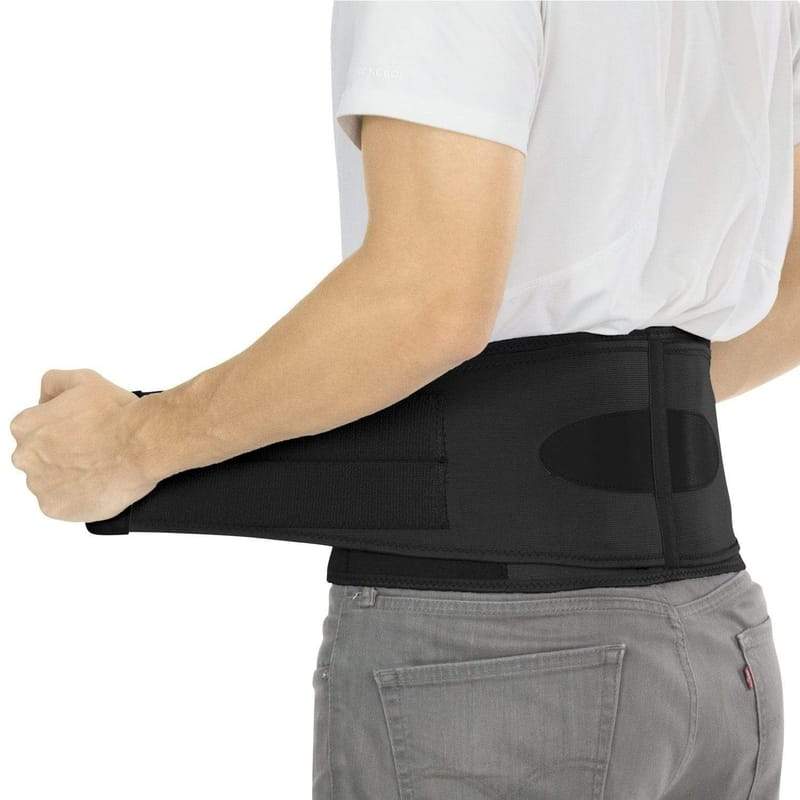Description
A back brace is a supportive device designed to stabilize the spine and provide support to the back muscles. It’s commonly used for various reasons, including:
- Pain Relief: Back braces can help alleviate pain caused by conditions like herniated discs, sciatica, or muscle strains by providing support and reducing strain on the back.
- Posture Improvement: Some braces are designed to encourage better posture by aligning the spine and preventing slouching.
- Injury Recovery: After back injuries or surgeries, a brace can help immobilize the area, promoting healing and preventing further injury.
- Preventative Use: Individuals with physically demanding jobs or those who lift heavy objects may wear a back brace to reduce the risk of injury.
Back braces come in various styles, including rigid braces for maximum support and flexible braces for light support and mobility. It’s important to choose the right type for your specific condition and consult a healthcare professional for personalized advice
Features
- Material Composition: Back braces are typically constructed from breathable, lightweight materials that provide comfort and durability. Many models also feature moisture-wicking technology to keep the skin dry during extended wear.
- Adjustable Straps: Most back braces come with adjustable straps or Velcro closures, allowing users to customize the fit for maximum comfort and support. This feature is particularly useful for accommodating different body shapes and sizes.
- Variety of Designs: Back braces come in various designs, including lumbar support belts, full back braces, and posture correctors. Each design targets specific areas and conditions, allowing users to choose based on their needs.
- Support Levels: Back braces are available in different support levels, from mild support for everyday wear to rigid braces for post-injury recovery or severe conditions. This range enables users to select the appropriate brace for their situation.
- Lightweight and Portable: Many back braces are designed to be lightweight and easy to wear, making them suitable for both daily activities and physical exercise.
Advantages
- Pain Relief: One of the primary benefits of a back brace is its ability to alleviate pain associated with conditions such as lower back strain, herniated discs, or sciatica. The compression provided by the brace can help reduce swelling and promote better circulation.
- Improved Posture: Back braces can assist in correcting poor posture by providing support to the lumbar region. This can be particularly helpful for individuals who spend long hours sitting at a desk.
- Injury Prevention: By stabilizing the spine, back braces help prevent injuries during heavy lifting or physical activities. They can provide the necessary support to reduce the risk of strains or sprains.
- Facilitation of Recovery: For individuals recovering from surgery or injury, back braces help immobilize the spine, allowing for a controlled recovery process while minimizing movement that could worsen the condition.
- Versatility: Back braces are suitable for various contexts—whether for athletic activities, manual labor, or daily tasks—making them a practical addition to anyone’s health and wellness toolkit.
Conclusion
Back braces are essential tools for providing support, stability, and pain relief for the spine and lower back. With a variety of designs and support levels available, users can find a back brace that meets their specific needs, whether for injury prevention, rehabilitation, or chronic pain management. Investing in a quality back brace can significantly enhance comfort and mobility, making it a valuable asset for individuals seeking to maintain their back health and improve their overall quality of life.

 Cart is empty
Cart is empty 




Reviews
There are no reviews yet.